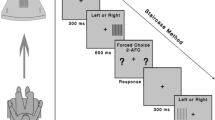Abstract
Three methods clinically used for measuring spatial contrast sensitivity were performed monocularly in normal subjects to compare their sensitivity and applicability. The methods tested were (1) the Von Békésy tracking procedure, (2) the Method of Increasing Contrast, both carried out on a Nicolet CS-2000 automated Vision Tester, and (3) the Vistech Contrast Test System, a photographic test chart. The results show that the threshold sensitivities of the Von Békésy tracking procedure and the Method of Increasing Contrast were not significantly different. For sensitivity to middle and high spatial frequency, the Vistech test chart was found to approximate the Method of Increasing Contrast. With automated testing, a slower rate of contrast progression and a larger visual angle produced lower thresholds of detection of the contrast-sensitivity function. Using a slow rate of contrast progression, both the Vistech test chart and the Method of Increasing Contrast were rapidly conducted, easy to administer, and gave good approximations of the spatial contrast-sensitivity function.
Similar content being viewed by others
References
Frisén L, Frisén MA (1981) Study of the neuroretinal basis of visual acuity. Graefe’s Arch Clin Exp Ophthalmol 215:149–157
Ginsburg AP (1984) Large-sample norms for contrast sensitivity. Am J Optom Physiol Opt 61:80–84
Ginsburg AP (1984) A new contrast sensitivity vision test chart. Am J Optom Physiol Opt 61:403–407
Ginsburg AP, Cannon MW (1983) Comparison of three methods for rapid determination of threshold contrast sensitivity. Invest Ophthalmol Vis Sci 24:798–802
Hoekstra J (1974) The influence of the number of cycles upon the visual contrast threshold for spatial sine wave patterns. Vision Res 14:365–368
Kupersmith MJ, Nelson JI, Seiple WH, Carr RE, Weiss PA (1983) The 20/20 eye in multiple sclerosis. Neurology 33:1015–1020
Quigley HA, Addicks EM, Green WR (1982) Optic nerve damage in glaucoma: III. Quantitative correlation of nerve fiber layer loss and visual field defect in glaucoma, ischemic optic neuropathy, papilledema and toxic neuropathy. Arch Ophthalmol 100:135–146
Rubin G (1988) Reliability and sensitivity of clinical contrast sensitivity tests. Clin Vis Sci 2:169–177
Wall M (1986) Contrast sensitivity testing in pseudotumor cerebri. Ophthalmology 93:4–7
Author information
Authors and Affiliations
Rights and permissions
About this article
Cite this article
Tweten, S., Wall, M. & Schwartz, B.D. A comparison of three clinical methods of spatial contrast-sensitivity testing in normal subjects. Graefe’s Arch Clin Exp Ophthalmol 228, 24–27 (1990). https://doi.org/10.1007/BF02764285
Received:
Accepted:
Issue Date:
DOI: https://doi.org/10.1007/BF02764285




